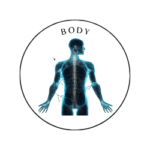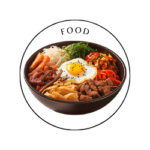 Mind
Mind
- Digital and Modern Well-being
- Mental Health and Emotional Well-being
- Mind-Body Connection and Holistic Health
- Parenting and Family
- Personal Growth and Development
- Relationships and Social Well-being
- Stress and Relaxation
- Therapeutic and Creative Practices
- Trauma and Recovery
- Work, Productivity, and Discipline
 Body
Body
 Fitness
Fitness
 Food
Food
 Beauty
Beauty
Keto Diet for Quick Fat Loss

Keto Diet for Quick Fat Loss: A Science-Backed Approach
The ketogenic diet, often referred to as keto, has gained immense popularity for its potential to promote rapid fat loss. This low-carb, high-fat eating plan is not just a trend; it’s a scientifically grounded approach to weight loss that forces the body to burn fat for energy instead of carbohydrates. If you’re seeking quick fat loss while preserving muscle mass and boosting energy, the keto diet might be the solution.
What Is the Keto Diet?
The keto diet revolves around drastically reducing carbohydrate intake and replacing it with fats. This shift puts your body into a metabolic state called ketosis, where it becomes highly efficient at burning fat for energy.
Here’s a macronutrient breakdown for a typical keto diet:
- Fats: 70–80% of daily calorie intake
- Protein: 10–20%
- Carbohydrates: 5–10% (usually under 50 grams per day)
When carbs are restricted, the liver produces ketones from fat, which become the primary energy source for your body.
How Does Keto Promote Quick Fat Loss?
Burning Fat for Energy
With limited carbohydrates, the body turns to its fat stores for energy, resulting in accelerated fat burning.Appetite Suppression
Ketones have a natural appetite-suppressing effect, making it easier to stick to a calorie deficit.Reduced Insulin Levels
Lower carb intake leads to lower insulin levels, a hormone that promotes fat storage. This allows the body to access stored fat more easily.Preservation of Lean Muscle Mass
The protein intake on keto supports muscle maintenance, even during rapid fat loss.
Getting Started on the Keto Diet
Starting keto requires careful planning and commitment. Here’s how to begin:
1. Eliminate High-Carb Foods
Say goodbye to grains, starchy vegetables, sugary treats, and most fruits.
2. Emphasise Healthy Fats
Incorporate foods like:
- Avocados
- Olive oil
- Coconut oil
- Fatty fish (salmon, mackerel)
- Nuts and seeds
3. Choose High-Quality Proteins
Opt for grass-fed meat, poultry, eggs, and tofu to meet your protein needs.
4. Add Low-Carb Vegetables
Leafy greens, broccoli, cauliflower, and zucchini are keto-friendly options packed with nutrients.
5. Track Your Macros
Use apps or food journals to monitor your fat, protein, and carbohydrate intake to ensure you stay within keto guidelines.
What to Expect: The First Few Weeks
As your body adapts to ketosis, you might experience some side effects known as the keto flu. Symptoms include fatigue, headaches, and irritability, often caused by dehydration and electrolyte imbalances. Combat these by:
- Drinking plenty of water
- Increasing sodium, potassium, and magnesium intake
- Gradually reducing carbs instead of cutting them out overnight
Once your body adjusts, you’ll likely notice increased energy levels and reduced cravings.
Foods to Enjoy on Keto
- Proteins: Beef, chicken, pork, eggs, seafood
- Fats: Butter, ghee, avocado, nut butters, MCT oil
- Vegetables: Spinach, kale, Brussels sprouts, zucchini
- Snacks: Cheese, olives, hard-boiled eggs, keto-friendly nuts (almonds, macadamias)
Foods to Avoid on Keto
- Grains: Bread, pasta, rice
- Sugary foods: Sweets, sodas, desserts
- High-carb vegetables: Potatoes, carrots, corn
- Fruits: Bananas, apples, oranges (except for small amounts of berries)
Tips for Maximising Fat Loss on Keto
Stay in a Calorie Deficit
Even on keto, consuming more calories than your body needs will hinder fat loss. Monitor your intake to ensure a calorie deficit.Incorporate Intermittent Fasting
Pairing keto with intermittent fasting can accelerate fat loss by extending the period your body burns stored fat for energy.Exercise Regularly
Resistance training and low-intensity cardio complement keto by preserving muscle mass and increasing fat burning.Avoid Hidden Carbs
Watch for carbs in processed foods, sauces, and dressings. Always check labels for hidden sugars and starches.Hydrate and Replenish Electrolytes
Drinking plenty of water and supplementing with electrolytes helps prevent dehydration and keeps your body functioning optimally.
Potential Challenges and How to Overcome Them
- Adherence: Social situations and cravings can make sticking to keto difficult. Plan meals in advance and carry keto-friendly snacks to stay on track.
- Plateaus: If fat loss stalls, reassess your calorie intake, increase physical activity, or experiment with intermittent fasting.
- Digestive Issues: A sudden increase in fat intake can lead to digestive discomfort. Gradually increase fat consumption to allow your body to adjust.
The Science of Long-Term Success
While the keto diet is effective for quick fat loss, sustainability depends on your ability to maintain healthy habits. Transitioning to a less restrictive low-carb diet or cyclical keto can help maintain your progress over time.
Key Takeaways
The keto diet is a powerful tool for quick fat loss, leveraging the body’s natural fat-burning mechanisms to promote weight loss while stabilising energy levels and controlling hunger.
By focusing on healthy fats, quality proteins, and low-carb vegetables, you can effectively shed fat without sacrificing nutrition or muscle mass. As with any diet, success on keto requires consistency, careful planning, and monitoring your progress.
With dedication and the right approach, the keto diet can help you achieve your fat loss goals while paving the way for long-term health and wellness.
